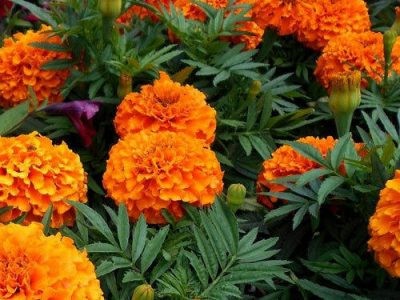
Various tagetes species grow wild and abundantly in India, and several species are used in the production of perfume oils. Tagetes Patula is a tall perennial plant with orange-colored flowers, It grows semiwild and is cultivated on a comparatively large scale in the western parts of India, particularly in the northern highlands.
Apperance:- Yellowish-amber-colored essential oil which is mobile when freshly distilled, but soon oxidizes and resinifies and becomes very viscous when exposed to air and moisture. Aged oils are viscous, dark amber or brownish colored.
Odor:- Oils are characterized by a very powerful fruity top note, somewhat reminiscent of green apples. The bodynotes are strongly herbaceous, somewhat sharp.
Specific Gravity:- 0.845 - 0.890 at 20 deg.C
Refractive Index:- 1.48000 to 1.50700 @ 20.00 deg.C
Optical Rotation:- + 2 to +10
Extraction:- Tagetes oil is extracted from the leaves, stalks and flowers, picked when the seeds are just starting to form.
Composition:- The main chemical components are tagetone, limonene, valeric acid and ocimene etc.
Uses & Benefits:-
The oil finds use in certain types of herbaceous fragrances, e.g. fougere, lavender, etc., and occasionally in florals such as jasmin, gardenia, chypre, violet, etc., where the herbaceous-green notes play an important role. Modern aldehydic bases, “tabac’’-bases, etc., may also benefit from trace additions of tagetes patula oil. Tagetes Essential Oil smells fresh, sweet, floral and slightly fruity.
Safety Precautions:-
Tagetes oil is a very powerful oil and should be used sparingly and should be avoided during pregnancy. Not to be used on a sensitive skin and may cause photosensitivity. Cases of dermatitis have been reported.
Therapeutic Properties:-
The therapeutic properties of Tagetes oil are anti-infectious, anti-microbial, antibiotic, anti-spasmodic, anti-parasitic, antiseptic, insecticide and sedative.